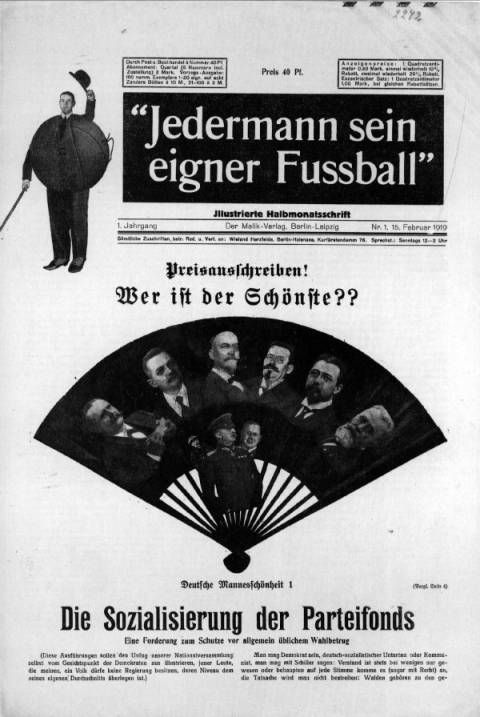Dadaism: the Anti-art Revolution
- Maya Sánchez Urrutia

- Jun 25, 2023
- 6 min read
Dadaism is as unique as it is difficult to describe. As one of the most daring and experimental artistic movements of the 20th century, Dadaism managed to leave a mark in art history and influenced multiple generations of artists. While it is recognized as a greatly important phenomenon, it can’t really be pinpointed as a conventional artistic movement since at the core of Dadaist values and ideas there was a staunch refusal to conform to any type of formality and a constant rejection to the mainstream ideas about art. These details make it complicated for academics and art historians to give Dadaism a place within the framework of traditional art history while maintaining the point of view and conventions of the artists who adopted Dada.
Regardless of the complicated endeavor of studying such a phenomenon, it is undeniable that Dadaism changed the way art was created and perceived in the early 20th century. Dadaists did not prioritize only art but also gave social, political and philosophical commentary through an illogical way of expression in their works, bringing them out of the exclusively artistic sphere. While other artistic movements were described as a wave, artist Max Ernst said “Dada was a bomb”, a sudden revolutionary event full of contradictions, nonsensical assertions and a deeply anti-formal sentiment (Bigsby, 1972).

The Origins of Dadaism
The complicated nature of Dadaism makes it difficult to pinpoint an exact moment when the idea was conceived and developed. The Dadaists were a both a group and independent, a collective yet individuals, so the formalization of a Dadaist society was contrary to the movement. Regardless of this, the origins of Dadaism can be traced to the mid 1910s, before the end of World War I (Hopkins, 2016). The war ravaged Europe and represented the final downfall of the old tradition and logic of European society. For some young people, such a tragic war revealed the bankruptcy of the established moral values, intellectual and social systems, as the supposedly civilized nations of Europe destroyed one another (Bigsby, 1972). As this ideological decay was happening, the taste and aesthetics of art was also changing. The so-called Avant-garde art movements, such as cubism and impressionism, moved away from the mimetic rationality of the art canon which had predominated until then, and even allowed for artists to move away from figurative art as a whole (Bigsby, 1972).
Dada was born out of the rejection of the rationality that was happening at a social, political and artistic level. The anti-establishment sentiment and the experimentation of avant-garde artists allowed for the rejection of any form of established convention or formality, and the Dadaists would go even further with their refusal to conform. Despite the elusive origin of Dadaism, it is recognized that the Cabaret Voltaire in Zurich served as a sort of birthplace for the phenomenon. The nightclub was founded by German theatre director Hugo Ball in the backroom of another bar as a way to find likeminded young people who wanted to participate in the making of art and performances (Lewer, 2016). It opened February 5th, 1916, and Ball was joined by people who would also become important figures in the Dadaist movement, such as Tristan Tzara and German Richard Huelsenbeck (Lewer, 2016). With the club came the publication of Cabaret Voltaire, a magazine which documented the performances, exhibitions and other events that took place in the Cabaret (Lewer, 2016). This magazine was the first time the word Dada appeared in print (Bigsby, 1972)

Dadaism Takes Shape
The origin of the term Dadaism was purposely randomized. According to Huelsenbeck, he found the word dada in a German-French dictionary by slipping a paper knife between the pages and opening up the book, thus finding the word, which was adopted by his colleagues (Bigsby, 1972). Some other explanations for the name have popped up, yet this is the most widely accepted anecdote. With the establishment of the Cabaret Voltaire group, Dadaism began to be better defined. Poetry, both in print and performance, became a central part of the movement, and Tzara was at the center of the provocative and experimental “anti-art” poetic performances (Bigsby, 1972). The mere refusal to find a meaning was the subversiveness which Dadaists were looking for, and most Dadaist works can’t be analyzed by conventional means. The Cabaret Voltaire closed in 1917 and Ball and Tzara went on to open the Galerie Dada. After the closing of the cabaret, the Dada circle in Zurich moved away from the experimental theatrical performances and poetry presentations, showcasing more graphic and plastic arts.
From Zurich, Dada traveled to Germany and France, where it evolved at a regional level. The German Dadaists formed the Berlin group, where Dadaist ideas became more radicalized and leaned more into the political context of the Dada (Bigsby, 1972). German Dadaists utilized satire and the subversive artistic techniques of Dadaism to mock and give commentary on the post-war government. On the other hand, Dadaism did not erupt into French society with such a strong revolutionary spirit, as the new social discourse was compatible with Dada’s critique of reason and the bourgeoisie (Bigsby, 1972). In early 1920, Paris became a center for Dadaism and Tristan Tzara pushed the movement by moving to France.

Dada’s popularity spread throughout the continent of Europe mainly due to the many publications about the movement. In Zurich, the periodical Dada was published until 1919 and made public the philosophy of the founding members of the Cabaret Voltaire group (Bigsby, 1972). Along with Dada magazine, Tristan Tzara published his Manifeste Dada in 1918, perhaps the most impactful Dadaist publication (Lewer, 2016). Tzara’s manifesto was incongruent, anti-establishment and absurd, leaning into contradictions and anti-art. While in Germany many publications were censored and banned, Dadaist publications flourished in France. After his move, Tzara collaborated with Andre Breton, who would later author the Surrealist Manifesto in Litterature magazine (Bigsby, 1972). With this introduction into the French literary scene, Tzara moved the publication of Dada to Paris and this became the most important city for Dadaism (Bigsby, 1972).
Dadaist Techniques and Artistic Innovations
Dada’s revolutionary approach to art and aesthetics gave way for new artistic techniques and other innovative or unconventional ways of producing art. Perhaps the most significant contribution of Dadaist artists was the collage and the photomontage. With the technological advances in photography, pictures had replaced paintings as the quintessential format for imitating nature. As photography got better at capturing reality, painting moved away from being a mimetic artform and painters began dedicating themselves to explore the abstract possibilities of painting. Dadaists refused to accept the mimetic label that was imposed upon photography and collage, and photomontage was born out of a desire to subvert the realism of photography. The combination and superposition of pictures along with other graphic and typographic elements was a way to disrupt the new aesthetics of print media. Berlin Dada was the center of collage for Dadaism, with Hannah Höch as one of the most important collage artists of the period (Rubin, 1968). She developed a personal style with many layers of text and images from mass media, which she used to satirize and criticize Berlin society after the war (Hirsch, n.d.).

The other most famous heirloom from Dadaism is the concept of readymade art, or the found object. Marcel Duchamp is perhaps the most famous of the Dadaists and can be summed up as the embodiment of anti-art. Although he left France for New York before the war ended, Duchamp took with him the ideas and values of Dadaism (Bigsby, 1972). In the early 1910s, Duchamp abandoned painting and began producing his readymades, which he called objects-trouves (found objects). These artworks were a contradiction to all the established values of the art world, making it the true expression of anti-art. The objects-trouves were simply fabricated objects that Duchamp chose and that he, as the artist, gave the condition of artwork to (Bigsby, 1972). This challenged the idea that an artist needed to create a piece and managed to place in the spotlight what society would call a mundane object. This new artistic format was seen as a revolt and later became an accepted and popular artform in contemporary art.
Dadaism's Influence and Legacy
Dadaism began losing potency in 1920 and faded almost into oblivion by the mid 1920s. The artists and writers who had kept the phenomenon alive began distancing themselves from each other and taking on new endeavors, developing other ideas. Nevertheless, this did not mean the end of Dada, as it inspired many of the other artistic movements that came after. Andre Breton was the first to distance himself from Dada and what he saw as an empty provocativeness from the original Zurich group, namely Tzara (Lewer, 2016). Breton moved on to become one of the first Surrealist writers, taking Dadaism’s spontaneity but redirecting it “toward that which beckons us” (Lewer, 2016). Dada valued madness and the unconscious, as these were not subject to logic and reason. This ideas went into Surrealism, which emphasized unconscious and subconscious sentiments (Lewer 2016). While Surrealism is the most recognizable successor to Dada, it also influenced geatly other artistic movements like Abstract Expressionism or Pop Art.

Ultimately, Dadaism seems elusive precisely because it is. The starting point of the movement was a contradiction to distance itself from any formal definition, and when Tristan Tzara provided one in his manifesto, he simply explained “Dada means nothing” (Tzara, 1918). The confusing nature of Dada and the contradictory sentiment with which it was explored by the Dadaist might cause it to be complicated to describe for unexperienced audiences. Furthermore, there is no denying that the Dadaists managed to materialize their revolution against reason by confusing anyone who attempted to apply logic to this phenomenon.
Academic sources
E., B. C. W. (1972). Dada & Surrealism. Routledge.
Encyclopædia Britannica, inc. (2023, April 28). Dada. https://www.britannica.com/art/Dada
Encyclopædia Britannica, inc. (n.d.). Ready-made. Encyclopædia Britannica. https://www.britannica.com/art/ready-made
The Museum of Modern Art (n.d.). Hannah Höch: Moma. https://www.moma.org/artists/2675
Hopkins, D. (2016). Introduction. In A Companion to Dada and Surrealism. essay, John Wiley & Sons, Inc.
Lewer, D. (2016). Histories/Geographies. In D. Hopkins (Ed.), A Companion to Dada and Surrealism. essay, Wiley & Sons, Inc.
Lippard, L. R. (1971). Dadas on art. Prentice-Hall.
Short, R. (1980). Dada & Surrealism. London: Book Club Associates.
Visual sources
Cover image: Max Ernst (1920). Dada Siegt [poster]. Retrieved from: https://archive.org/details/dadasurrealism0000shor/page/n1/mode/2up
Figure 1: Bulletin Dada No. 6 (1920) [Magazine cover]. Bridgeman Images. Retrieved from: https://www.bridgemanimages.com/en/french-school/front-cover-of-bulletin-dada-no-6-february-1920-colour-litho/colour-lithograph/asset/166553
Figure 2: Cabaret Voltaire (1916) [Magazine cover] Spencer Collection, The New York Public Library. Retrieved from https://digitalcollections.nypl.org/items/2087fba0-4d99-0137-25fb-73f129adf798
Figure 3: Heartfield, J. (1919) Jedermann sein eigner Fussball [Pamphlet] Retrieved from: https://en.wikipedia.org/wiki/File:Jedermann_sein_eigner_Fussball.jpg
Figure 4: Höch, H. (1919) Cut with the Kitchen Knife through the Last Epoch of Weimar Beer-Belly Culture in Germany [Collage] Retrieved from: https://en.wikipedia.org/wiki/File:Hoch-Cut_With_the_Kitchen_Knife.jpg
Figure 5: Breton, A. (1924) Manifeste du Surrealisme [Book] Éditions du Sagittaire. Retrieved from: https://www.museumtv.art/artnews/articles/le-manifeste-du-surrealisme-dandre-breton/







Comments